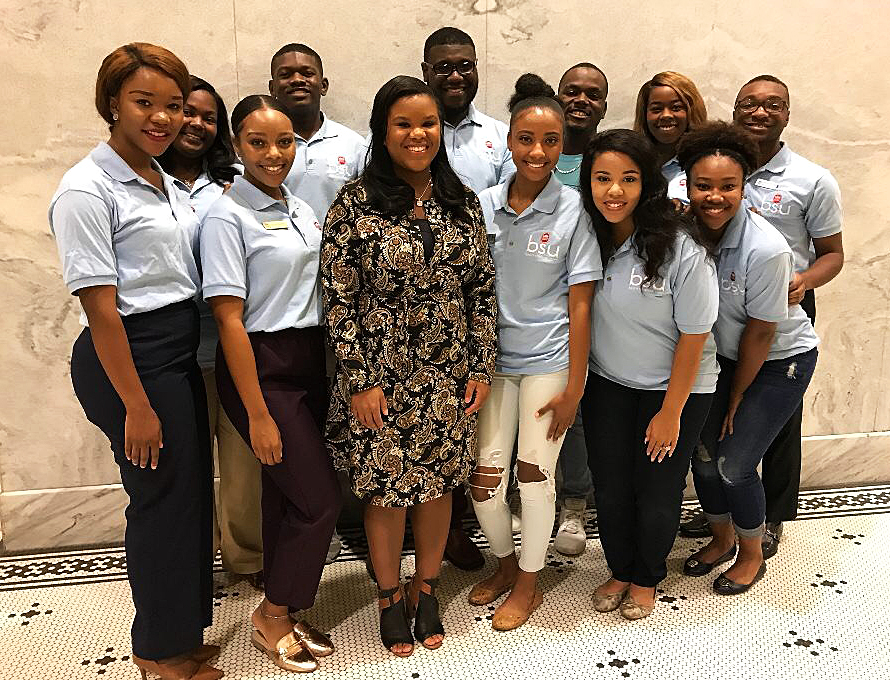When people think of the University of Mississippi, they often visualize the Lyceum. The oldest building on campus was constructed in the summer of 1848 and has since become a symbol for the university.
The Lyceum is the lone survivor of the six original buildings on campus. Even though it is such a staple for the university’s image, it is in the process of being contextualized. Language for contextualization plaques has been written, and it is now up to the administration whether the university will display the plaques.
“Contextualization is a process by which (the university’s) administration thought it was the best way to approach items on our campus, places on campus, locations, buildings that kind of have a troubled past in which they clearly have divisive racial connotation to them,” said Charles Ross, chair of the African-American studies program and a member of the contextualization committee on campus.
In March 2017, the Chancellor’s Advisory Committee on History and Context announced it would be changing the name of Vardaman Hall and working to contextualize seven other sites on campus. These include Lamar Hall, Barnard Observatory, Longstreet Hall and George Hall, as well as antebellum buildings, including the Lyceum, Barnard Hall, Croft and Hilgard Cut because they were built by enslaved people.
Architect William Nichols designed the Lyceum and used slave labor to construct it when work began in 1846. Ross said the story of the Lyceum’s construction needs be a part of the overall history of the building.
“It’s a symbol that represents the university on letterheads and corresponding literature, but the side of the story about how this structure actually came about and the individuals that were directly involved in helping create it and the sacrifices they made, that is something that is not a part of the mainstream narrative, so that is why the particular building was included,” he said.
Due to its longstanding history, the Lyceum has become a prominent building on campus. The building was used during the Civil War as a hospital for Confederate and Union soldiers and became an important place during the 1962 riots regarding the enrollment of James Meredith.
During the civil rights movement, Meredith was the first African-American student to integrate the University of Mississippi. His enrollment sparked controversy and riots in October 1962.
“The Lyceum was the centerpiece of the James Meredith riots because the registration office was in the Lyceum at that time,” said Dewey Knight, associate director of the Center for Student Success and First-Year Experience. “In order to register for class, he had to go into that building, and the two sides of people, people who supported his admission and those who didn’t, gathered and we got into this riot.”
Due to this association with the civil rights movement and the building’s 169-year-old age, the Lyceum was named a United States national landmark in October 2008.
“That’s the reason why when we restored it in 1999 and 2000. It took a year longer because when you do a historic restoration, you have to put the building back to the original as closely as you can,” Knight said. “The sheer presence it bears on that circle, every student that has ever been to this university, they identify with that building”.
This significant title has made some people feel it is even more important to have the Lyceum contextualized.
“It’s not simply white Southerners but African-Americans and other individuals that are very aware of the history of the Confederacy, what it stood for and how it was created,” Ross said.
There have been discussions about placing a plaque on the Lyceum that will tell the story of those individual slaves.
“Our committee has not been given the responsibility of making sure that these plaques are constructed and seeing that those plaques are placed in certain locations,” Ross said. “Our committee was given the responsibility of coming up with the language.”
Ross said it gave the university’s administration its wording for the plaques this May and now it will be the administration’s job to to make the plaque a reality, to tell this story of the Lyceum.
Junior psychology and nursing major Amelia DeWitt, an Ole Miss ambassador, is required to bring tour groups inside the Lyceum. Once inside, it’s up to her what stories she wants to tell.
“I think people have the right to know what has happened within the Lyceum walls, and during the past three years of giving tours, I have never had negative feedback about any of the stories I have told about the Lyceum,” DeWitt said. “It is an important part of campus, and most people are intrigued by the past of it.”
The university has been known to have a controversial past when it comes to race, and Ross feels that the university needs to do more than just contextualize.
“I’m ambivalent because I think that contextualization has been used as a justification for not doing more,” Ross said. “For people, like myself, who have been here for a number of years, the one thing that is very frustrating is this continuing perception the University of Mississippi has, that it drags its feet and is reluctant and not very proactive on issues of race.”










